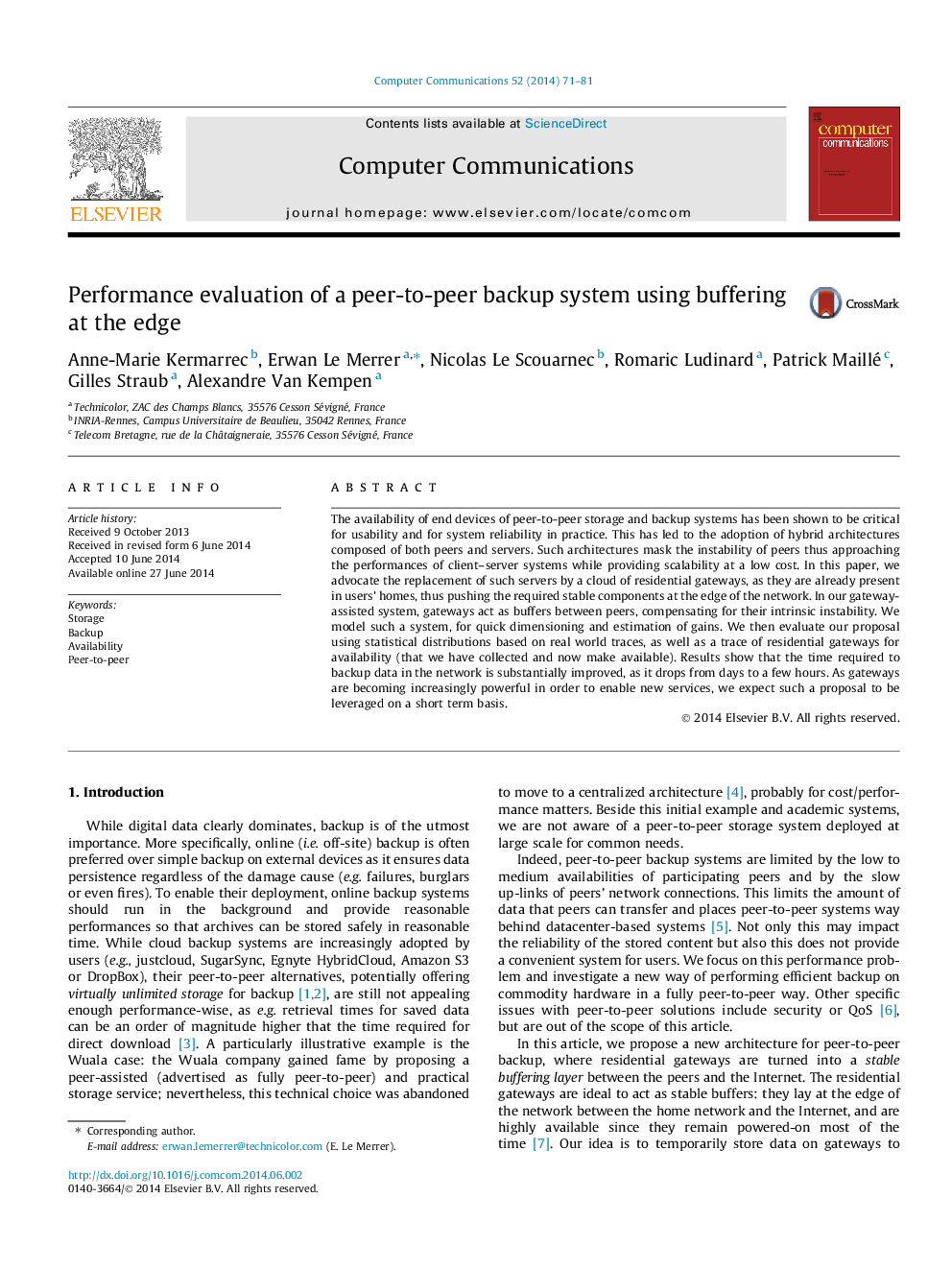| Article ID | Journal | Published Year | Pages | File Type |
|---|---|---|---|---|
| 450031 | Computer Communications | 2014 | 11 Pages |
The availability of end devices of peer-to-peer storage and backup systems has been shown to be critical for usability and for system reliability in practice. This has led to the adoption of hybrid architectures composed of both peers and servers. Such architectures mask the instability of peers thus approaching the performances of client–server systems while providing scalability at a low cost. In this paper, we advocate the replacement of such servers by a cloud of residential gateways, as they are already present in users’ homes, thus pushing the required stable components at the edge of the network. In our gateway-assisted system, gateways act as buffers between peers, compensating for their intrinsic instability. We model such a system, for quick dimensioning and estimation of gains. We then evaluate our proposal using statistical distributions based on real world traces, as well as a trace of residential gateways for availability (that we have collected and now make available). Results show that the time required to backup data in the network is substantially improved, as it drops from days to a few hours. As gateways are becoming increasingly powerful in order to enable new services, we expect such a proposal to be leveraged on a short term basis.
